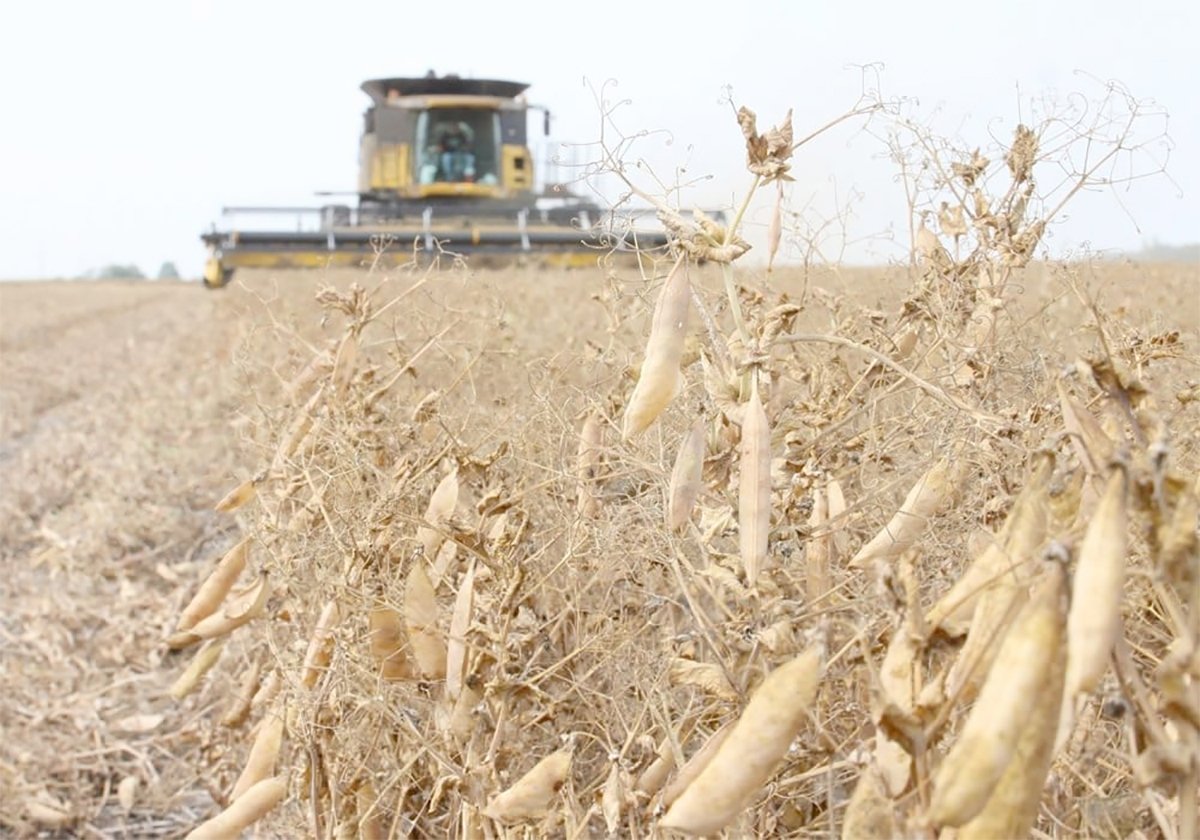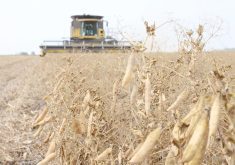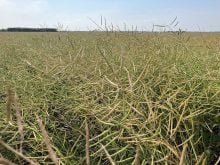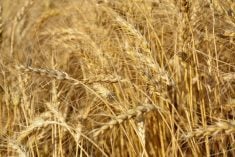The results of this year’s Canadian Western Agribition beef carcass competition were a surprise to everyone except Belgian Blue breeders.
The winner has been a Limousin or Limousin-cross for so long that the Belgian Blue-Charolais carcasses that took both the steer and heifer classes were the early talk of the show.
Sparky Blues of Zealandia, Sask., entered both.
Les Sparks said when his son took the phone call letting them know of the wins, he thought someone was playing a joke and phoned back to Regina to confirm the news.
Read Also

Chinese, Indian tariffs take toll on pea prices
The disruption of pea exports from Canada’s largest customers will likely result in slow pea exports for the remainder of the crop year.
“The Blue guys are just jumping,” Sparks said.
“It’s a victory,” smiled Marie Goubau, of the Canadian Belgian Blue Association. “This proves we can grade.”
Sparks had placed third twice before with his Belgian Blue cattle.
Two years ago, a Belgian Blue-Limousin cross was the winner.
Sparks said a straight Blue would likely never win the competition because they don’t marble well.
“With crosses, they feed out good,” he said.
He suspects the marbling and the large rib eye on the carcasses he submitted put him over the top.
He doesn’t use implants or any tricks.
“We just feed them the old way,” he said.
Goubau said people in the barns were talking about the results, and producers have to recognize the qualities of Belgian Blues.
“They put meat on the carcass,” she said, adding there was increased interest in the breed during the show. People were looking for bulls and semen.
It’s been an uphill battle for the breed known for its double-muscling.
Pierre Mallieu, general secretary with the international association in Belgium, said the breed is now recognized as the third most popular beef breed in Europe, behind Charolais and Limousin, and tied with Blonde D’Aquitaine.
It is the No. 1 choice for crosses, in both dairy and commercial cattle, in the United Kingdom, he said.
Sparks said he first got into Belgian Blues in the mid-1990s when he was milking Holsteins.
“We wanted thickness in our dairy cow calves,” he said. “We weren’t interested in raising dairy calves to keep in the milking herd.”
Crossing a Holstein and a Belgian Blue will produce the equivalent of a Hereford, Sparks said.
The dairy is long gone, but the Blue influence remains in Sparks’ 100-cow herd.
“We’re hoping now we can maybe sell a few,” he said.
Sparks picks up $2,000 in prize money for each carcass.
The reserve heifer was a Limousin-Red Angus cross from Marlin Firby of Minnedosa, Man. The reserve steer was a Limousin entered by Shewchuk Cattle Co. of Binscarth, Man.















